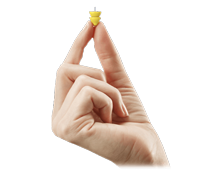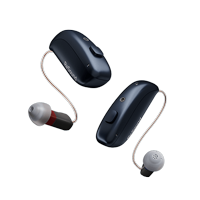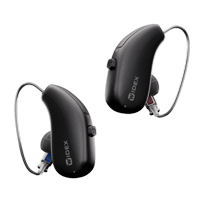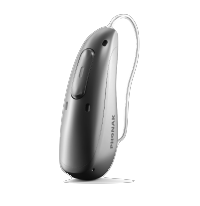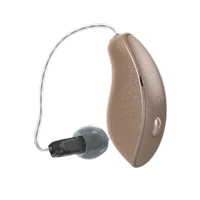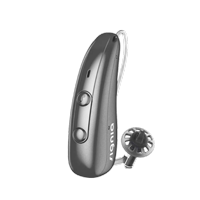If you’ve invested in hearing aids, you may be wondering if these essential devices qualify for any tax benefits. The good news is that hearing aids are considered medical expenses by the IRS, which means they may be tax deductible under certain circumstances.
Key Takeaway: Yes, hearing aids are tax deductible as a medical expense on your federal tax return. However, you can only deduct medical expenses that exceed 7.5% of your adjusted gross income (AGI), and you must itemize deductions on Schedule A rather than taking the standard deduction.
Tax Disclaimer
The information provided on this page is for general informational purposes only and is not intended as tax, legal, or financial advice. Tax laws are complex and subject to change, and individual situations vary. California Hearing Center is not a tax or legal advisory firm, and our staff cannot provide specific tax advice for your personal situation.
We recommend consulting with a qualified tax professional or certified public accountant regarding your specific circumstances before making tax-related decisions. The IRS website (www.irs.gov) also provides official guidance on medical expense deductions.
This information is current as of April 2025 but may change with future tax legislation. California Hearing Center makes no guarantees regarding tax deductions or benefits you may receive.
Understanding Medical Expense Deductions
The IRS allows taxpayers to deduct qualifying medical expenses on their federal income tax returns. Because hearing loss is recognized as a medical condition, hearing aids and related costs qualify as medical expenses for tax purposes.
However, there are important requirements that determine whether you’ll actually benefit from this deduction:
- You must itemize deductions on Schedule A (Form 1040) instead of taking the standard deduction
- Only medical expenses exceeding 7.5% of your adjusted gross income can be deducted
- The expenses must have been paid in the tax year for which you’re filing
- The expenses must not have been reimbursed by insurance or other programs
The 7.5% AGI Threshold Explained
The most significant limitation on medical expense deductions is the 7.5% AGI threshold. This means you can only deduct the portion of your total qualified medical expenses that exceeds 7.5% of your adjusted gross income.
Let’s say your adjusted gross income (AGI) is $60,000 for the year.
- Calculate 7.5% of your AGI: $60,000 × 0.075 = $4,500
- Determine your total medical expenses, including hearing aids: $8,000
- Subtract the threshold from your expenses: $8,000 – $4,500 = $3,500
- Your potential medical expense deduction is $3,500
In this example, if you itemize deductions, you could deduct $3,500 of your medical expenses.
Hearing Aid Expenses That Qualify for Deduction
When calculating your potential hearing aid tax deduction, include all related costs:
| Qualifying Expenses | Description |
|---|---|
| Hearing aids | The cost of the devices themselves, including both prescription and over-the-counter options |
| Batteries | Ongoing costs for hearing aid batteries or charging equipment |
| Repairs and maintenance | Costs to repair, clean, or maintain your hearing aids |
| Hearing tests | Examinations and evaluations related to hearing loss |
| Accessories | Additional equipment like Bluetooth streamers, remote controls, or cleaning tools |
| Extended warranties | The cost of protection plans or extended warranties |
| Transportation costs | Travel expenses specifically for obtaining hearing care, including mileage, parking, and public transit fares |
Keep Good Records
Maintain detailed records of all hearing-related expenses, including receipts, invoices, and proof of payment. Also track transportation costs related to hearing appointments, as these can add to your deductible amount.
Standard Deduction vs. Itemizing
To deduct medical expenses, including hearing aids, you must itemize deductions on Schedule A instead of taking the standard deduction. This is only beneficial if your total itemized deductions exceed the standard deduction amount.
| Filing Status | 2024 Standard Deduction | 2025 Standard Deduction (Estimated) |
|---|---|---|
| Single | $13,850 | $14,600 |
| Married Filing Jointly | $27,700 | $29,200 |
| Head of Household | $20,800 | $21,900 |
| Married Filing Separately | $13,850 | $14,600 |
If your total itemized deductions (including medical expenses, charitable donations, mortgage interest, etc.) are less than the standard deduction for your filing status, you would save more by taking the standard deduction instead of itemizing.
Important Consideration
Many taxpayers find that the standard deduction provides more tax benefit than itemizing, especially with the higher standard deduction amounts currently in effect. Before committing to itemizing your deductions, it’s advisable to calculate your taxes both ways to determine which method provides the greater benefit.
How to Claim Hearing Aid Expenses on Your Tax Return
If you’ve determined that itemizing deductions will benefit you, follow these steps to claim your hearing aid expenses:
Collect receipts, invoices, and statements for all qualifying medical expenses, including hearing aid costs, for the tax year.
Add up all qualifying medical expenses, ensuring they were paid (not just incurred) during the tax year and were not reimbursed by insurance.
Enter your total medical expenses on line 1 of the “Medical and Dental Expenses” section of Schedule A.
Enter your AGI on line 2, calculate 7.5% of that amount, and enter the result on line 3.
Subtract the amount on line 3 from your total medical expenses on line 1. Enter this result on line 4 (if it’s greater than zero).
Fill out the remaining sections of Schedule A for other itemized deductions, such as state and local taxes, mortgage interest, and charitable contributions.
Compare your total itemized deductions with the standard deduction for your filing status to determine which option results in a lower tax liability.
Alternative Tax Benefits for Hearing Aids
If you don’t qualify for the medical expense deduction, there may be other tax-advantaged ways to pay for hearing aids:
Health Savings Accounts (HSAs)
If you have a high-deductible health plan (HDHP) with an HSA, you can use tax-free HSA funds to pay for hearing aids and related expenses. This approach provides tax benefits regardless of whether you itemize deductions or take the standard deduction.
Flexible Spending Accounts (FSAs)
If your employer offers an FSA, you can contribute pre-tax dollars and use these funds for qualifying medical expenses, including hearing aids. Like HSAs, this tax benefit is available even if you take the standard deduction.
Health Reimbursement Arrangements (HRAs)
Some employers offer HRAs, which can reimburse employees for qualified medical expenses, potentially including hearing aids, using tax-advantaged funds.
Planning Ahead
If you anticipate needing hearing aids in the future, consider increasing your HSA or FSA contributions during open enrollment to maximize tax benefits.
Frequently Asked Questions
Yes, over-the-counter hearing aids are tax deductible as medical expenses. The IRS considers all hearing aids, including OTC options, to be qualifying medical expenses if used to treat hearing loss.
Yes, you can include medical expenses you paid for your spouse and dependents when calculating your medical expense deduction. This includes hearing aids purchased for dependent children or qualified relatives.
You can only deduct the portion of expenses that you paid out-of-pocket and were not reimbursed by insurance. If your insurance covered 80% of your hearing aid costs, you can only include the remaining 20% that you paid when calculating your medical expense deduction.
No, medical expense deductions are calculated on a year-by-year basis. You can only deduct expenses paid during the tax year for which you’re filing. You cannot combine expenses from multiple years to meet the 7.5% AGI threshold.
Currently, there is no specific federal tax credit for hearing aids. However, there have been legislative efforts to create such a credit. Some states may offer credits or other financial assistance programs for hearing aids, so check with your state tax authority or department of health for local options.
Conclusion: Maximizing Your Hearing Aid Tax Benefits
While hearing aids are tax deductible as medical expenses, the 7.5% AGI threshold and the requirement to itemize deductions mean that not all taxpayers will benefit from this deduction. Consider these final tips:
- Bundle medical expenses when possible. If you have flexibility in timing elective medical procedures, consider scheduling them in the same tax year as your hearing aid purchase to increase your chance of exceeding the 7.5% AGI threshold.
- Consider tax-advantaged accounts like HSAs and FSAs, which provide tax benefits regardless of whether you itemize deductions.
- Consult a tax professional if you’re unsure whether itemizing deductions would benefit you or if you have questions about your specific situation.
- Explore state tax benefits, as some states offer additional deductions or credits for medical expenses that federal tax law doesn’t provide.
Remember that tax laws change periodically, so it’s always a good idea to verify current rules and thresholds before filing your tax return.
Turning Life up Through Better Hearing
For over 30 years, California Hearing Center has been helping people improve their lives through better hearing. Our experienced audiologists can help you find the right hearing solution for your needs and budget, and our staff can provide guidance on using insurance and tax benefits to make hearing care more affordable.
Or call us at (650) 342-9449
Keywords: hearing aid tax deduction, are hearing aids tax deductible, hearing aid tax benefits, medical expense deduction hearing aids, HSA hearing aids, FSA hearing aids, hearing aid tax write off, itemizing hearing aid expenses, 7.5 percent AGI threshold hearing aids


